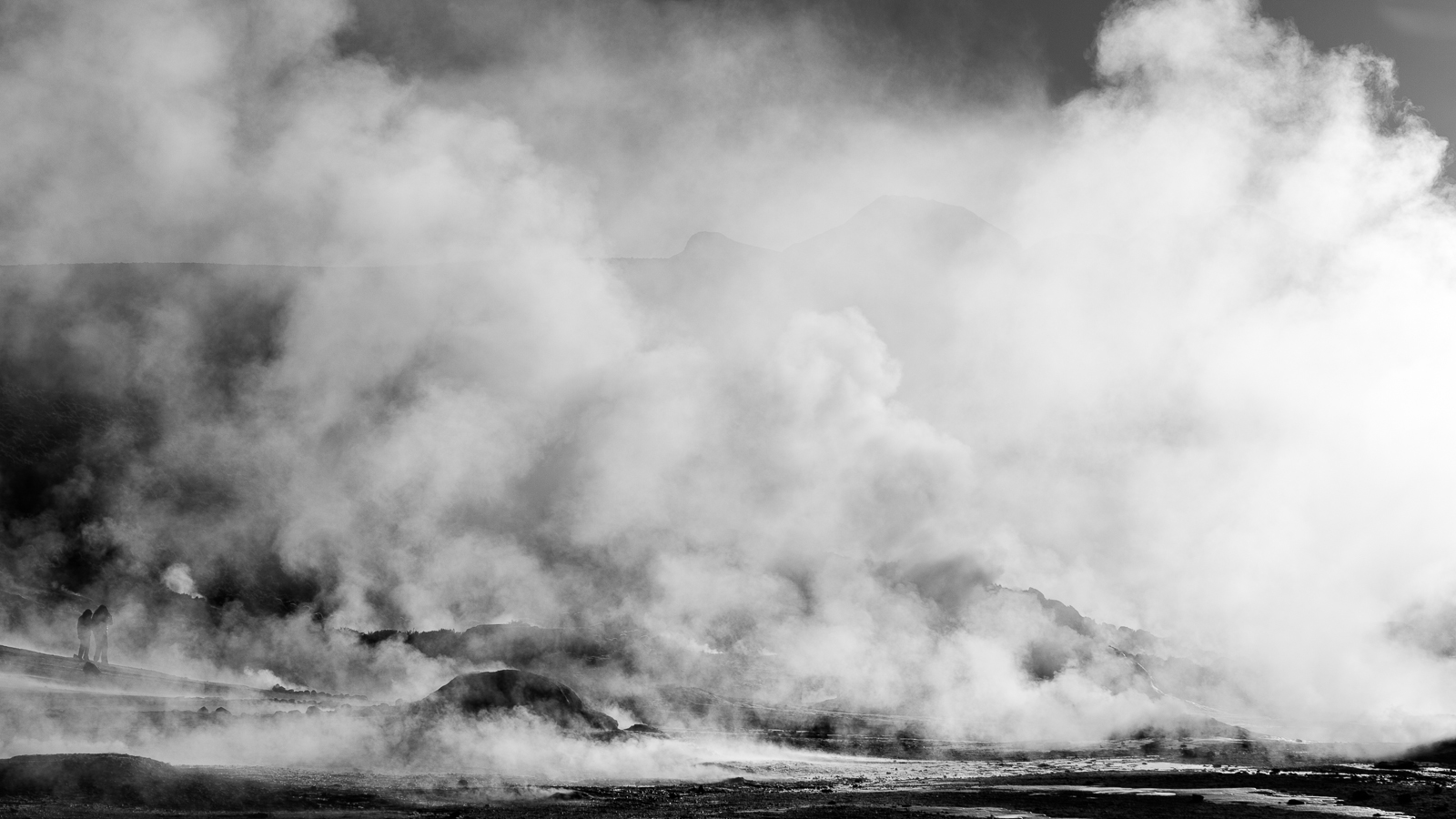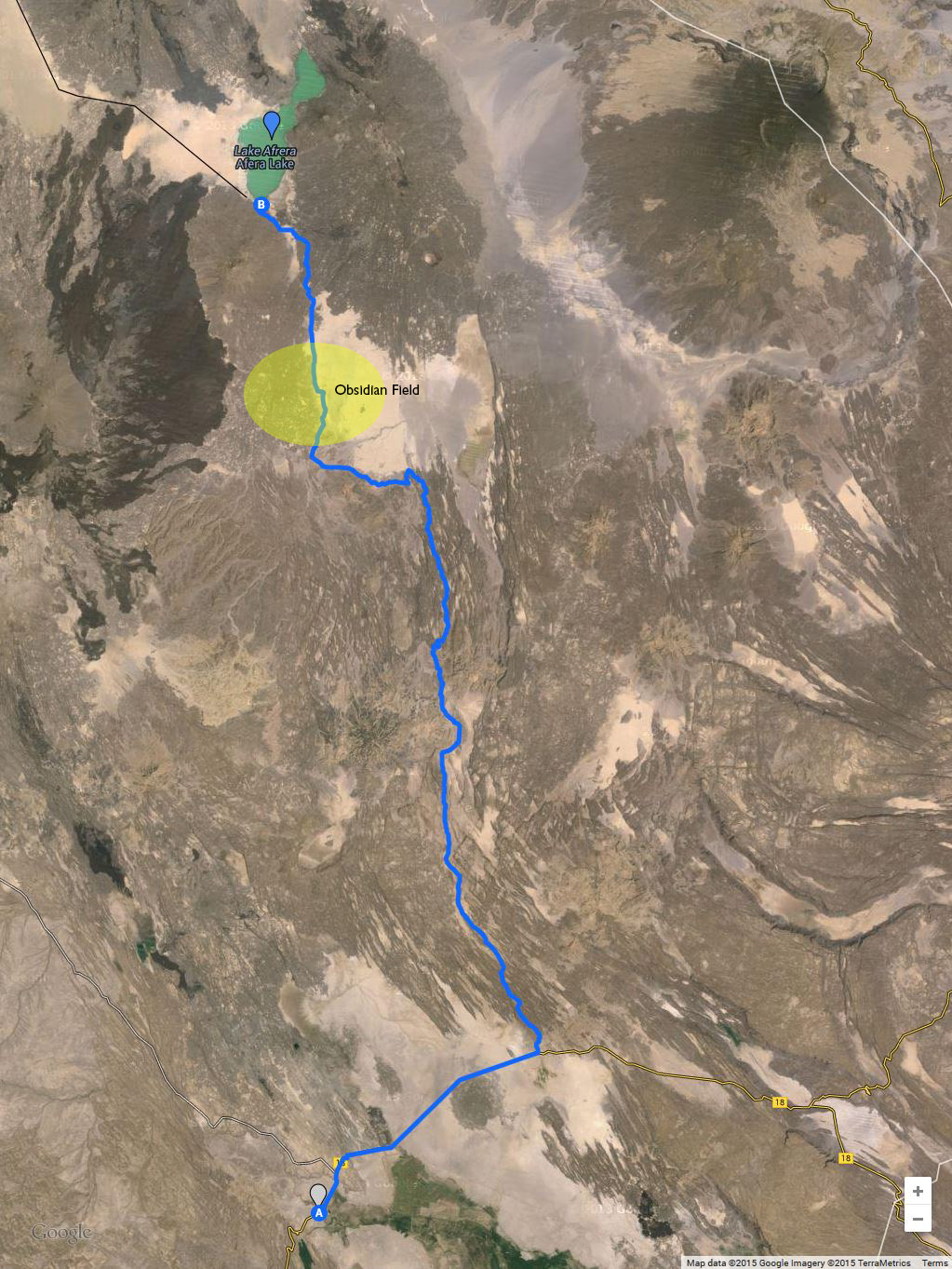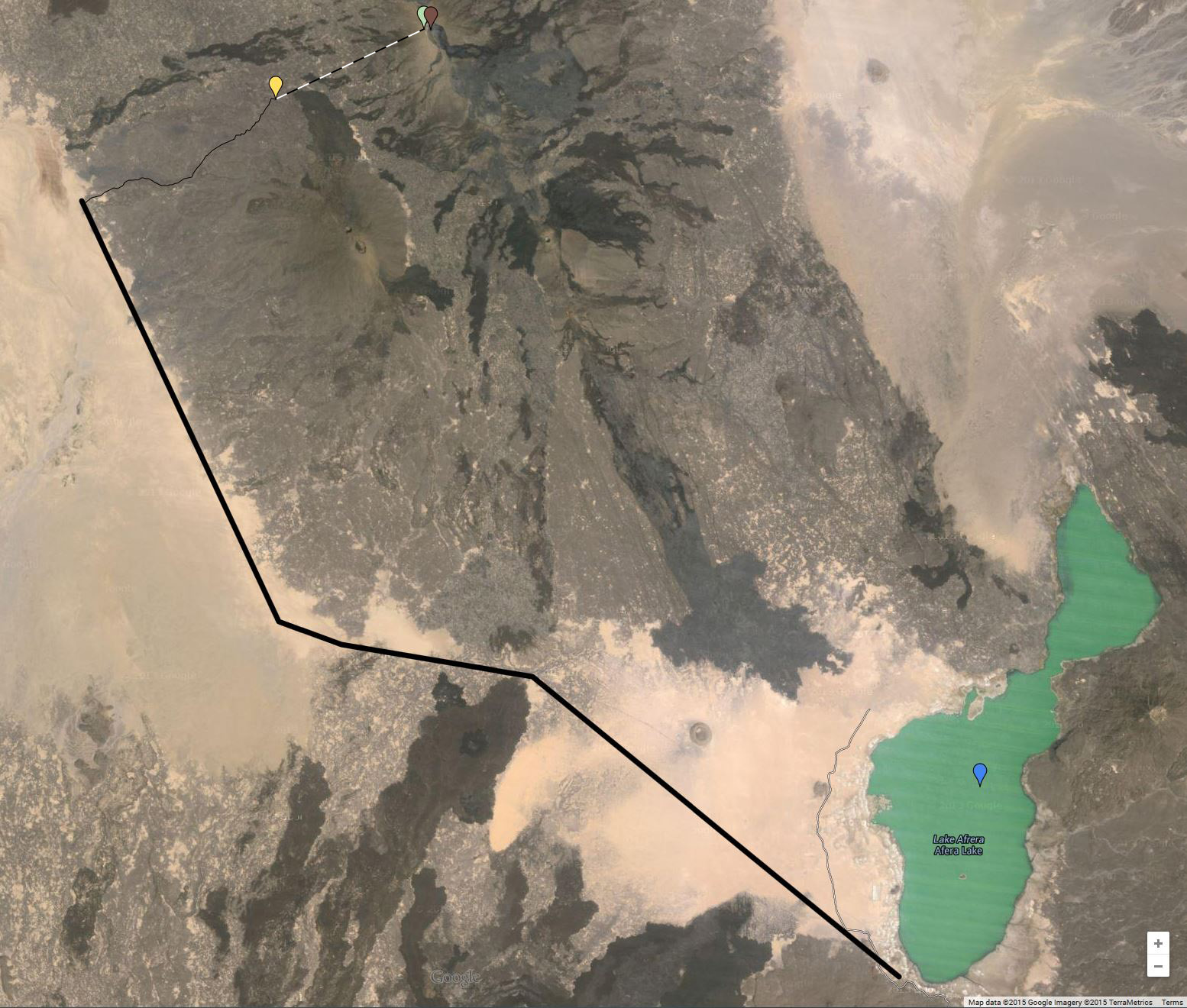Whilst I loved my most recent trip after evenings of critiquing the same photographs over and over again, I need a break and something else to look at.
So, it was time for a trip down memory lane and back to the trip that made me lose interest in architectural work and fall in love with landscape: Chile. Specifically this is El Tatio, the World’s highest geyser field at a lack-of-oxygen-headache-inducing 4,300 metres up in the Andes. At 5AM in the morning it is on the chilly side too and so wrapping up warm is definitely recommended.
This is an image that was completely lost in my Adobe Lightroom catalogue until now but, simply of curiousity I decided to go through all the images I took, not just the ones I had selected at the time.
I rather like it and it may have just become my favourite image from Chile. I’m so fickle…



![Dawn approaches as we descend from Erta Ale. [Click to enlarge!]](http://davehoggan.com/wp-content/uploads/2015/02/MG_1593_cs.jpg)
![Camels are a critical part of the Afar way-of-life and so get treated with love and care. [Click to enlarge!]](http://davehoggan.com/wp-content/uploads/2015/02/MG_1610.jpg)
![The sun literally bakes the ground. [Click to enlarge!]](http://davehoggan.com/wp-content/uploads/2015/02/MG_1652.jpg)
![Ash, as far as the eye can see [Click to enlarge!]](http://davehoggan.com/wp-content/uploads/2015/02/MG_1675.jpg)
![Luxury is relative. After four days without a toilet the sanitary facilities at Hamed Ale were a step up. Toilet is on the left; bucket-shower on the right. [Click to enlarge!]](http://davehoggan.com/wp-content/uploads/2015/02/MG_2208.jpg)
![En route from the salt plains to Berhale [Click to enlarge!]](http://davehoggan.com/wp-content/uploads/2015/02/MG_1731.jpg)
![Our temporary home at Hamed Ale and a testament to the fact that travelling with the right people makes everything fun! [Click to enlarge!]](http://davehoggan.com/wp-content/uploads/2015/02/IMG_0224.jpg)
![Dallol was once described by National Geographic as being one of the most remote places on Earth. [Click to enlarge!]](http://davehoggan.com/wp-content/uploads/2015/02/MG_2018.jpg)
![A bizarre landscape that is sadly now but a shadow of what it once was. [Click to enlarge!]](http://davehoggan.com/wp-content/uploads/2015/02/MG_1987.jpg)
![This is what the stunning, other-worldly landscape of Dallol is becoming due to potash mining. [Click to enlarge!]](http://davehoggan.com/wp-content/uploads/2015/02/MG_2014.jpg)
![The area was once a riot of vivid yellows, green, blues and white. buy nearby potash mining has had a devastating effect. [Click to enlarge!]](http://davehoggan.com/wp-content/uploads/2015/02/IMG_0215.jpg)
![The daily camel train heading out to the salt flats to pick up their cargo of white gold. [Click to enlarge!]](http://davehoggan.com/wp-content/uploads/2015/02/MG_2036.jpg)
![Cliffs of salt dominate the landscape and provide some excellent landscape to work with. [Click to enlarge!]](http://davehoggan.com/wp-content/uploads/2015/02/MG_2090.jpg)
![More evidence of the destruction of a continent. This fault has only appeared in the last year and mirrors the 6500km fault that is pushing eastern Africa away from the rest of the continent. [Click to enlarge!]](http://davehoggan.com/wp-content/uploads/2015/02/MG_2108.jpg)
![Getting ready to load the camel for the two-day journey back to Berhale. [Click to enlarge!]](http://davehoggan.com/wp-content/uploads/2015/02/MG_2189.jpg)
![Descending from Erta Ale. [Click to enlarge!]](http://davehoggan.com/wp-content/uploads/2015/02/MG_1583.jpg)
![An Afar military guard watches the only road in to the area. [Click to enlarge!]](http://davehoggan.com/wp-content/uploads/2015/02/MG_1635.jpg)
![Life survives in even the harshest environment. [Click to enlarge!]](http://davehoggan.com/wp-content/uploads/2015/02/MG_1651.jpg)
![Dunes of volcanic ash [Click to enlarge!]](http://davehoggan.com/wp-content/uploads/2015/02/MG_1678.jpg)
![Years of use has produced a polished salt track across the land. [Click to enlarge!]](http://davehoggan.com/wp-content/uploads/2015/02/MG_1819.jpg)
![Probably my favourite shot of the lake. [Click to enlarge!] (17mm, 1/10sec @ f/9.5, ISO 100, stacked ND grads)](http://davehoggan.com/wp-content/uploads/2015/02/MG_1331_cs.jpg)
![From the nearby hill you get a good view of the landscape around the lava lake. [Click to enlarge!] (35mm, 1/2sec @f/8, ISO 100)](http://davehoggan.com/wp-content/uploads/2015/02/MG_1473.jpg)
![The lake surface is a constantly moving mass of boiling, molten rock. [Click to enlarge!] (85mm, 1/750sec @ f/4.5. ISO 100)](http://davehoggan.com/wp-content/uploads/2015/02/MG_1383.jpg)
![Erta Ale can have moments of breath-taking wonder... [Click to enlarge!]](http://davehoggan.com/wp-content/uploads/2015/01/MG_15011.jpg)
![Your biggest issue will be the heat haze produced by 1200°C lava. Don't underestimate how many shots it will ruin... [Click to enlarge!]](http://davehoggan.com/wp-content/uploads/2015/02/Example-of-Heat-Haze-1600.jpg)
![When night falls the two-colour nature of the landscape takes over. [Click to enlarge!] (55mm, 1/15sec @ f/4.5, ISO 200)](http://davehoggan.com/wp-content/uploads/2015/02/MG_1290.jpg)
![Although quietly steaming away when we visited, the hornito is known to fountain lava too. [Click to enlarge!] (105mm, 1/250sec @ f/4.5, ISO 100)](http://davehoggan.com/wp-content/uploads/2015/02/MG_0646-2.jpg)
![OK, so this was a staged shot for a bit of fun - and he loved my sunglasses. But seeing three of the military in position for real on the second day at the lake was a sobering experience and a reminder that this is still a hotly contested area. [Click to enlarge!]](http://davehoggan.com/wp-content/uploads/2015/02/MG_0687-2.jpg)
![Four of us on the trip as close to an eruption as we'll every want to be! [Click to enlarge!] 50mm, 2 sec @ f/4, ISO 400](http://davehoggan.com/wp-content/uploads/2015/02/MG_1540.jpg)
![Two Afar military guards stand on watch as night falls. [Click to enlarge!] (47mm, 1/15sec @ f/8, ISO 100)](http://davehoggan.com/wp-content/uploads/2015/02/MG_0775.jpg)
![Staring into the abyss. [Click to enlarge!] 105mm, 1/500sec @ f/8, ISO 100](http://davehoggan.com/wp-content/uploads/2015/02/MG_0631.jpg)
![The lava lake at dawn is surrounded by a fragile lava landscape with its own unique beauty. [Click to enlarge!] (20mm, 1/15sec @ f/8, ISO 100)](http://davehoggan.com/wp-content/uploads/2015/02/MG_0713.jpg)
![You can spend hours watching the lake's surface constantly shifting, separating and reforming. It is almost hypnotic, or that could just be the gas! [Click to enlarge!] (35mm, 1/10sec @ f/5.6, ISO 100)](http://davehoggan.com/wp-content/uploads/2015/02/MG_1181.jpg)
![Tree stump in Lake Afdera, northern Ethiopia. [Click to enlarge!]](http://davehoggan.com/wp-content/uploads/2015/02/MG_0957.jpg)
![Tree stump in Lake Afdera, northern Ethiopia in the natural dawn light . [Click to enlarge!]](http://davehoggan.com/wp-content/uploads/2015/02/MG_0955-2.jpg)
![The original shot of the tree stump [Click to enlarge!]](http://davehoggan.com/wp-content/uploads/2015/02/MG_0948.jpg)

![Once of route 2, the roads are much quieter, so much so that whilst lying down to take this shot some of the others were in the middle of the road dancing to the radio... [Click to enlarge!]](http://davehoggan.com/wp-content/uploads/2015/01/MG_0010.jpg)
![After a long day in the 4WD you'll be in time for sunset. [Click to enlarge!]](http://davehoggan.com/wp-content/uploads/2015/01/MG_0090.jpg)
![The accommodation may get more basic on day three but you can't fault the view! [Click to enlarge!]](http://davehoggan.com/wp-content/uploads/2015/01/MG_0107.jpg)

![Sunrise at the lake offers a few frantic minutes of great opportunities... [Click to Enlarge!]](http://davehoggan.com/wp-content/uploads/2015/01/MG_0122.jpg)
![The night-time climb to get to the summit base camp may have been an experience, but it was nothing compared to our first sight of the volcano... [Click to enlarge]](http://davehoggan.com/wp-content/uploads/2015/01/MG_0296.jpg)